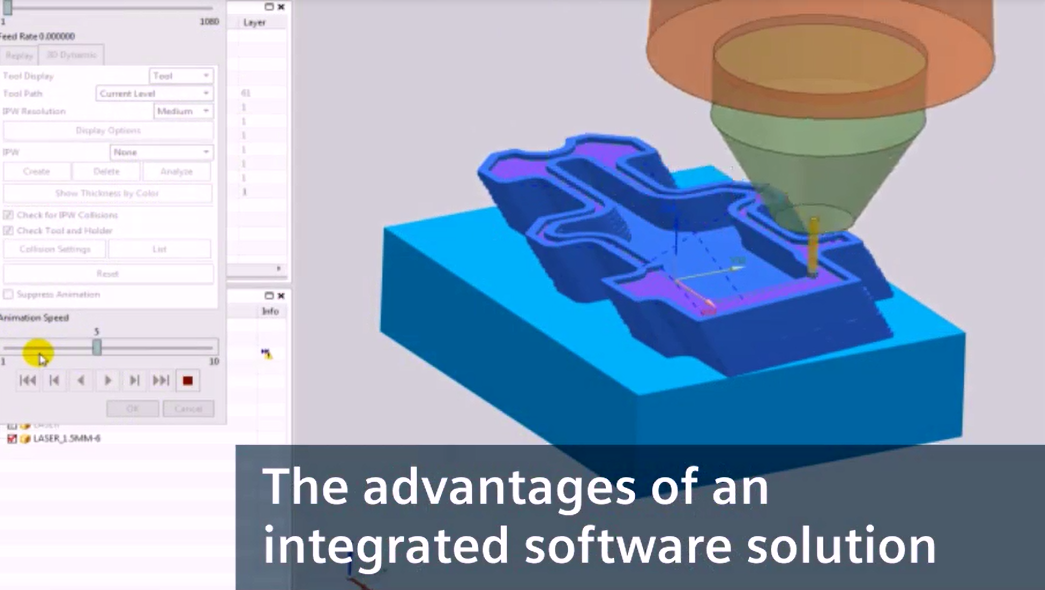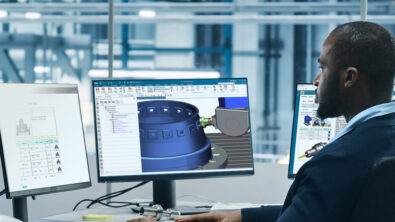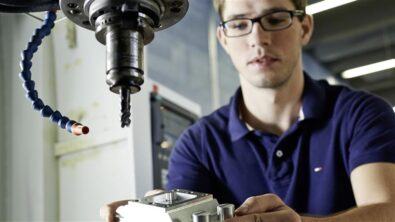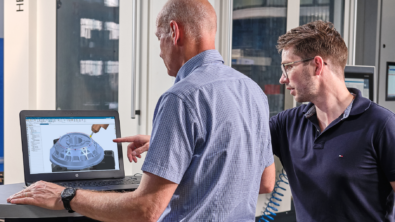Video: Hybrid Manufacturing Defined: Gregory H. Hyatt, Ph.D., DMG MORI

Gregory H. Hyatt, Ph.D., DMG MORI, Senior Vice President of Engineering and Chief Technology Officer, is featured in this four minute video, “Hybrid manufacturing defined,” in which he describes:
-
- The importance of hybrid manufacturing
-
- How manufacturers can benefit
-
- A wide range of applications for hybrid manufacturing
-
- How hybrid impacts the manufacturing process
-
- The benefits of combining the technologies
-
- How thermal simulation improves the process
Hybrid Manufacturing Defined
What we are referring to as hybrid manufacturing is consolidating additive manufacturing and subtractive manufacturing into one machine. Additive and subtractive manufacturing are not separated, instead they are combined on a single platform so the customer can toggle back and forth at will.
The Importance of Hybrid Manufacturing
Hybrid manufacturing is important because it enables a whole new set of value propositions for our customers to enable them to produce products that may not have been manufactured conventionally or even with a combination of separate additive and subtractive machines. The new solutions, the new value propositions, can only be enabled by a machine which supports both.
Historically, additive manufacture or precision additive manufacture has been an oxymoron. Additive could not provide the precision that is required for most designs. It is necessary to integrate the subtractive with the additive to achieve the flexibility that additive offers but with the precision we’ve traditionally enjoyed from milling, turning, and grinding.
How Manufacturers Can Benefit
A company can significantly reduce their costs with the hybrid approach by consolidating the additive process with conventional castings and forgings so that the entire part does not have to be built from scratch.
A Wide Range of Applications
We are finding applications in every market, such as automotive, aerospace, energy, and die and mold. The value propositions are different for each so it is not the same solution in each different market. But, there are applications in every conceivable market.
How Hybrid Impacts the Manufacturing Process
One of the very interesting ones is the consolidation of parts. Instead of an assembly including many connections and the possibility of leakage between the connections, the necessity for labor to assembly the connections, fasteners between the connections that could fail. You can build an entire integral part rather than an assembly.
The Benefits of Combining the Technologies
It is important to combine the technologies for multiple reasons. One of them is so we can perform machining mid-process before the part is finished. One of the reasons is so when the part comes out of the machine it is finished and there aren’t subsequent operations on other machines. It reduces the lead time to produce the component. In some cases it is to offer a level of precision that would be hard to match with multiple, subsequent operations with refixturing, and the stack up of fixturing errors as the part moves from one operation to another.
How Thermal Simulation Improves the Process
The thermal simulations are critical because the thermal issues have been one of the biggest impediments to commercialization of additive manufacturing. There have been issues with residual stress, with part movement and displacement, and errors in the geometry deposited. By being able to simulate the thermal map and to anticipate where the hot spots are, where the cold spots are, how the build strategy can be changed to prevent those, we can build more accurate parts and get them right the first time.
The Advantages of an Integrated Software Solution
Siemens stepped up to the plate to make the considerable investment required to build a single solution for the complete process chain from computer-aided design (CAD) through the different elements of computer-aided manufacturing (CAM): Additive CAM to subtractive CAM, the simulation, the thermal simulation, all of which is required to utilize the machine, and it obviously would have been very painful for the customer to use separate solutions for each of those and then try to cut and paste the fragments of programs and simulations together.
Learn more about Siemens’ NX Hybrid Additive Manufacturing solution.



